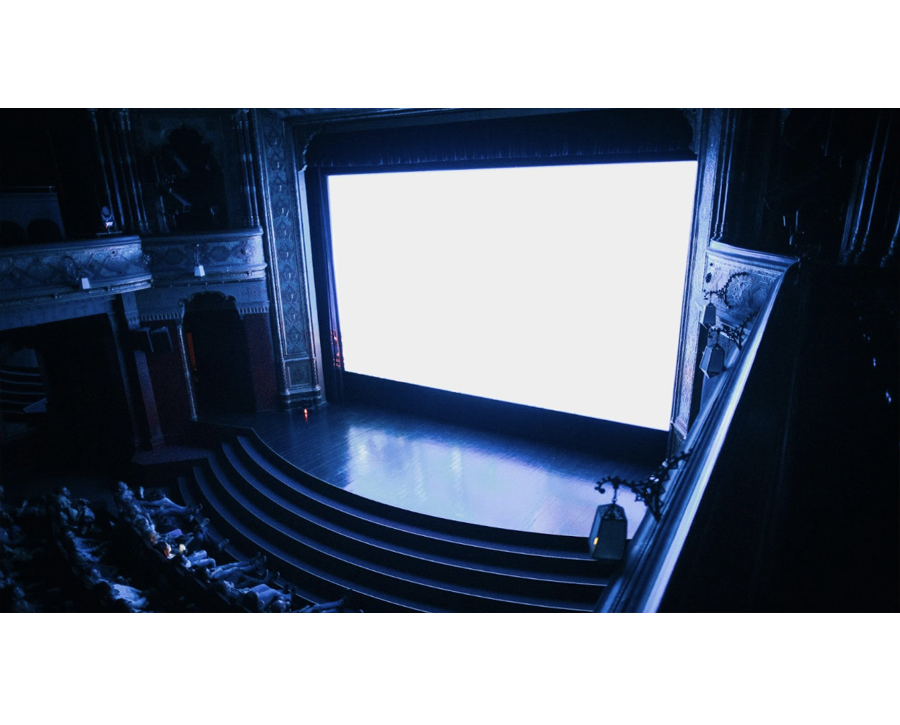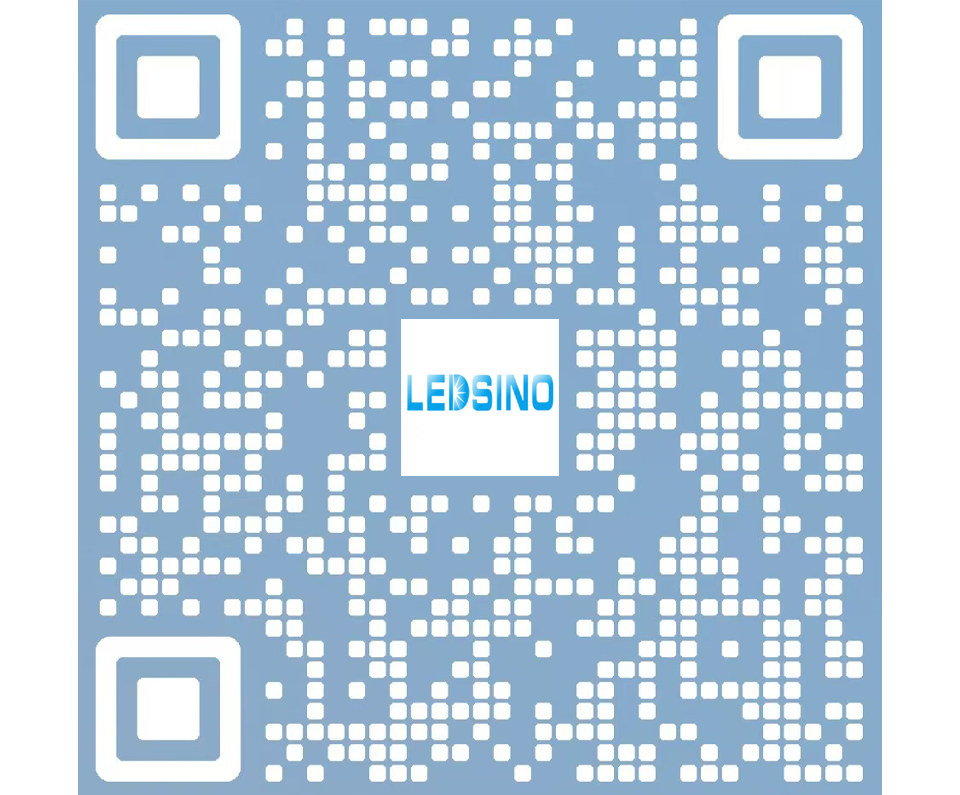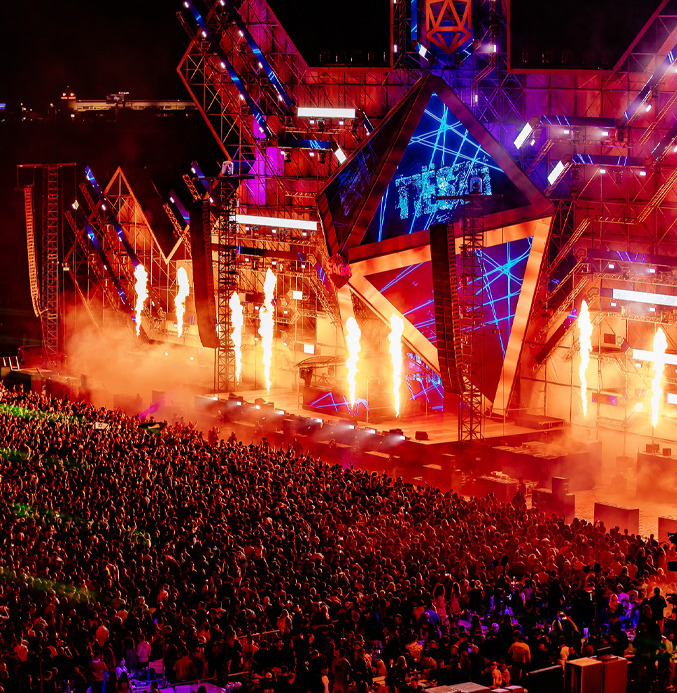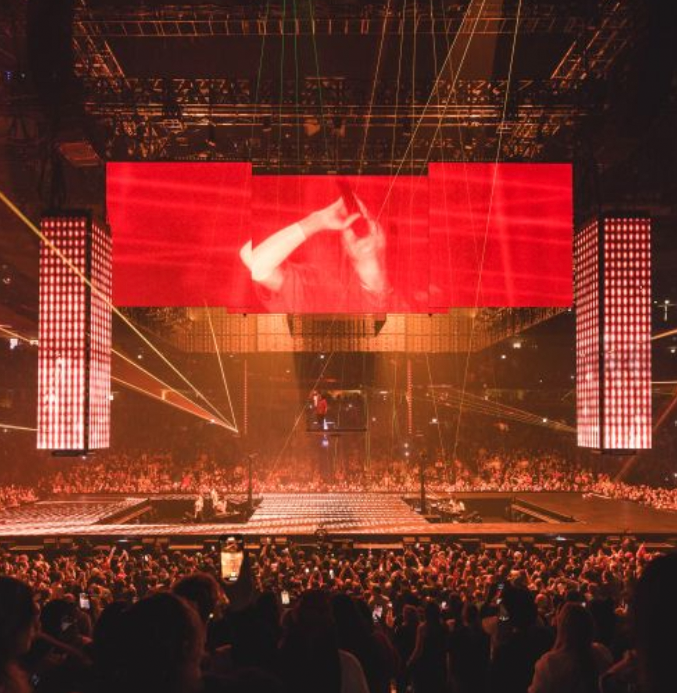
One of the biggest conversations going on in circles of cinema-goers and theater owners is the debate: is IMAX the same as a giant screen? Both have their own technique through which they provide audio-visual stimuli. Here, you will find the differences, uses and trade-offs of both screen types.
What Is A Giant Screen?
A Giant Screen or Giant Screen Digital (GSD) is a technology developed to display images on screens substantially larger than in movie theaters. These tend to stretch from wall to wall and take up most of your field of vision, which is why they are such a great way to watch movies.
In giant screens, sophisticated projections responsive to high-definition images are used while the audio system is typically multichannel. Giant Screens are meant to give audiences a sensation of involvement in a film whether it is a drama, action film, or a documentary.
Giant Screens are widely used in various settings, including:
- Theme Parks: For the thrilling 3D motion simulation platform device production
- Science and Technology Exhibitions: For clarity in depicting complex information on a chart or any other graphical view.
- Live Events and Concerts: For audiences to watch shows from a vantage point that feel very close to the performers in real life.
The flexibility that Giant Screens have makes them ideal for commercial as well as non-commercial usage while providing relatively large screen sizes at reasonable cost and reasonably good resolution.
IMAX Technology
IMAX stands for “Image Maximum”. IMAX screen for a theatre might have a width of roughly 72 feet and a height of approximately 53 feet. While general giant screens are typical film theatre inventions, IMAX takes it a step further. It has proprietary technologies that ensure the brilliance of visualizations and the depth of audial experience truly come alive. Let’s take a closer look.
Screen Design
IMAX screens are even bigger than conventional cinema theatre screens, which are 72-120 ft wide. In order to cover the entire field of vision of the audience, these screens may be made concave (like the OMNIMAX or IMAX Dome with 360-degree screens) so that you would feel you are actually inside the movie.
The aspect ratios of IMAX are also impressive, which contributes to the feel of the movie, particularly when there are complex action shots and beautiful cinematography.
Sound System
All IMAX theaters come with IMAX Digital Surround Sound that can engulf the audience in a full soundscape. A proprietary 12-channel system with speakers uniquely positioned maximizes the sound. This system can produce high-end sound and features clear sound with whispers, explosions or even music. IMAX theatres have excellent sound quality, which everyone in love with good sound and great movies will appreciate.
Projection Technology
With IMAX, you’re talking about double projector systems that really push the envelope and offer 8K resolutions. This approach brings sharpness, vibrant colors, and extreme brightness into focus. IMAX is also designed for 3D projection in contrast to most giant screens, which makes for further realism.
Value Proposition
The value concept that IMAX brings is that of an immersive and memorable movie-going experience. Whether it be a summer action movie, an informative docu-film or even a live performance, going to an IMAX gives you the best cinematic experience due to massive screens, superior sound, and cutting-edge projection technology.
Viewing Experience: Giant Screen vs. IMAX
On the subject of the audience experience, the advantages of the Giant Screens and IMAX aren’t mutually exclusive, but the type of satisfaction that each provides appeals differently depending on the audience. Let’s break down the key aspects:
Picture Quality
Giant Screens are known for their massive size. This means an almost life-like view. Still, there can be great deviation of the image quality depending on the projector screen technology used. Giant Screens with high resolution may provides excellent image quality, but brightness, contrast, and color accuracy can be disappointing at times.
However the name IMAX has become synonymous with premium image quality. Local IMAX screens are capable of projecting images in up to 12K meaning that they are incredibly sharp, bright and the colors are very deep. Also IMAX cameras and projectors used to record and playback the images are IMAX which makes the reproduction perfect for the giant screen .
Surround Sound
Sound quality is very important in the entire process of watching a movie. Multichannel sound systems are common at Giant Screens, but the systems may be a hit or miss, depending on a few factors.
For example, some theaters spend a lot on audio systems, thus making the theater’s sound top quality; others just spend a minimum. Consequently, their sound systems are not deep and clear to create the best experience.
On the contrary, IMAX theatres are famous for their exceptional sound system. IMAX Digital Surround Sound provides the audience with a circle of surround sound, which gives perfect sound. The sound in the halls of IMAX is clear and extremely powerful to ensure every whisper, each explosion, and every musical note played in a movie is as clear as it can be.
Cost Comparison: Giant Screen vs. IMAX
Setting up and operating a Giant Screen or IMAX system involves significant costs, but the investment varies depending on the technology and scale of the installation.
Giant Screen Price
The cost of a giant screen or an IMAX screen can depend on the size and kind of screen and the place to install it. A large screen of 231 sqm will cost between $70,000 and $185,000. Other costs such as transportation, insurance, import declaration duty, taxes, installation, and maintenance of such equipment should be added to this. These extra expenses can go to a total bill of between $90,000 and $200,000.
IMAX Screen Price
This, however, depends on the size and the equipment used. A newly built commercial IMAX theatre involves the construction of the theatre structure and design; sound and projection equipment can cost over $1,000,000.
These prices are tentative, and the price may differ depending on the supplier, location, and other functions and options people want. The overall cost can be cut as sometimes researching and finding the right supplier is economical.
Operational Costs
The operational costs for Giant Screens are generally lower, as they use standard digital projection systems that are easier and cheaper to maintain. With their specialized equipment and technology, IMAX systems require more frequent maintenance and higher operational costs, including the need for trained personnel to manage the system.
Which One Is Better For Different Use Cases?
Unlike the decision between Giant Screens and IMAX, the decision here is only contingent to the intended application of the device. All of them are effective but in different situations, and knowing the pros of each may help you choose one.
Movie Theaters
For commercial cinemas, IMAX is the first-line choice for commercial movies, especially those movies originally shot or post-produced in IMAX. The use of enhanced projection technology, enhanced sound systems, and designs used in the making of theater make the price of tickets high but deserved.
Giant Screens, though they cost less than IMAX, may not provide a similar or standardized picture and sound quality and are more suitable for small or limited-budget theatres.
Educational Presentations
Giant Screens excel especially in educational applications, including educational establishments such as schools, museums and planetariums. This makes them suitable for use in lectures, documentaries and most interactional presentations.
Flat Giant Screens are simpler to install and manage, while curvatures create a better feel for educational information. While visually more appealing, IMAX is not as suitable for educational applications as GiG, primarily because of higher costs and equipment specificity.
Live Events and Theme Parks
For live shows, musical performances and open-air theme parks, Giant Screens are a very viable solution. They are adaptable for use in big halls and other areas that experience changes in weather since they allow big crowds to view large pictures. IMAX is more suitable for a movie theatre experience. It is not as applicable for live performances and is more helpful for broadcasting recorded, professional material.
Conclusion
The Giant Screens and IMAX have their own specific pros and cons. IMAX provides a luxurious sound and image experience for cinemas, and Giant Screens is flexible and cost-effective for education and live performances. So, it once again boils down to what works for you.

Enter the digital world with our advanced display technologies.


